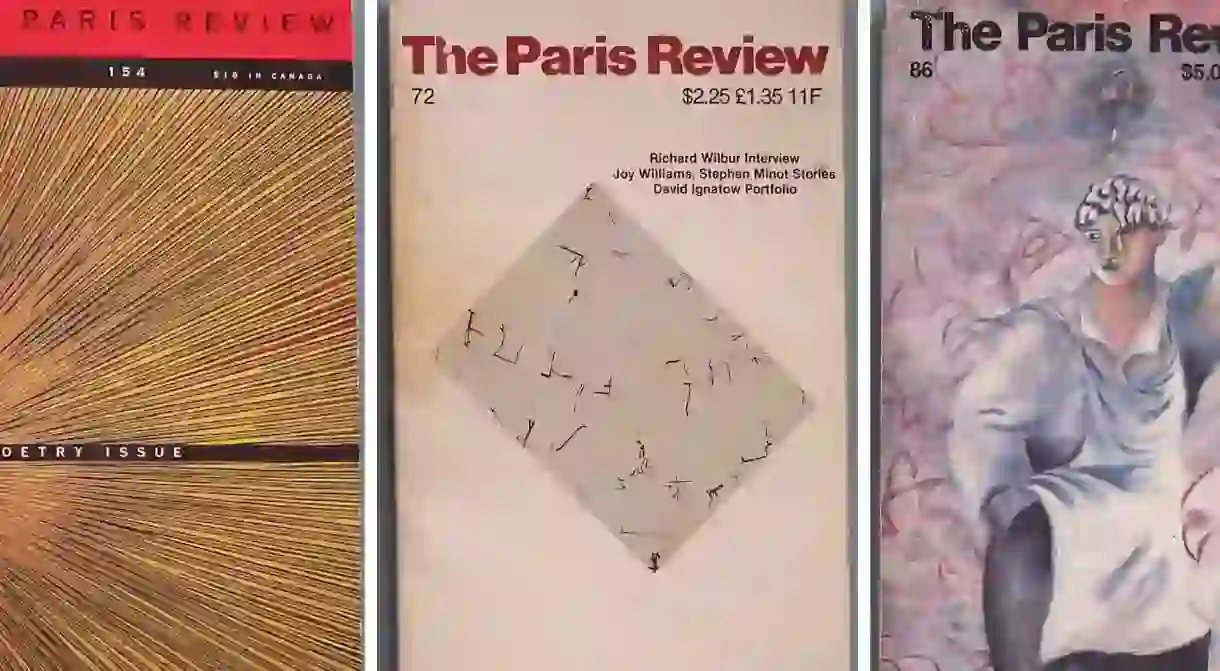The Paris Review, 1953-1973: The Literal Years Of A Literary Institution

The Parisian expatriate literary scene has so far experienced two major acts. The first, the glittering 1920s of Ernest Hemingway, F. Scott Fitzgerald, and Gertrude Stein that most people have at least a tenuous familiarity with thanks to Woody Allen’s Midnight in Paris. But the second, which coincided with the escalation of the Cold War during the 1950s, is no less captivating. Writers like William Styron, James Baldwin, and Allen Ginsberg called the city home and a quarterly magazine was created that has been gracing the coffee tables of book lovers ever since: The Paris Review.
The mission
The publication, which TIME once called ‘the biggest little magazine in history’, was founded in 1952 by Peter Matthiessen, Harold L. Humes, Donald Hall, and Thomas Guinzburg. However, by the time its first issue appeared in the spring of 1953, George Plimpton had taken over as editor-in-chief, a title he held until his death five decades later. The idea was to create a literary magazine that privileged fiction and poetry over criticism which, as Styron wrote on Plimpton’s behalf, belonged ‘somewhere near the back of the book’. To distribute this new product, the team compiled a list of all the Americans living in Paris and sent volunteer salesmen to their doors with a bundle of copies under their arms. Posters were printed, too, and pasted by night across the city, from prominent sites to the lavatory ceiling of the famous Café du Dôme. The team started in a backroom of the Éditions de la Table Ronde publishing house, briefly occupied a Thames River barge on the Seine, and settled for the Café de Tournon on the Left Bank for their unofficial headquarters.
https://youtu.be/5RE8VUNXtsQ
The interviews
Another original feature that immediately distinguished the magazine was the Writers at Work interview series. This offered insight into the processes of the literary giants of the time like E.M. Forster and Graham Greene while at the same time providing a cost-effective marketing gimmick. Big names were essential to attracting a readership but this startup publication had no way to pay them for their latest writing. Initially, interviewers, most of whom were inexperienced graduates, worked in pairs like FBI agents, scribbling down responses and pairing up notes later. The caliber of interviewee they were able to secure from their first issue is astonishing. The reason for this is a combination of connections (Plimpton knew Forster, for example, from studying at Cambridge), goodwill on the part of established writers towards a novel creative venture, and the sheer pleasure of being asked to discuss in depth their lives’ work.

The new names
From the beginning, The Paris Review has showcased emerging talent and future classics. Portions of Samuel Beckett’s novel Molloy were published in the pages of its fifth issue in the spring of 1954, one of his first publications in English (he favored writing in the language of his adopted homeland: French). Jack Kerouac also had the magazine to thank for some of his early exposure after they published his short story “The Mexican Girl” in the winter of 1955. This led to the essential Beat novel On the Road. Other significant works of contemporary literature published by the magazine include Italo Calvino’s Last Comes the Raven, Philip Roth’s Goodbye Columbus, Jeffrey Eugenides’s Virgin Suicides, and Jonathan Franzen’s The Corrections.

The art
Artists have also been featured since its earliest days, in the form of drawings and later, photographs. The summer 1955 issue contained self-portraits by Henri Matisse, Marc Chagall, and Fernand Lėger. Pablo Picasso provided six drawings for its seventh issue and a composite interview with him was the magazine’s lead feature ten years later in the summer-fall issue of 1964.

The cover story
Unbeknownst to Plimpton, Matthiessen had an ulterior motive for founding The Paris Review. As a young Yale graduate, he had been recruited by the CIA to run a covert mission monitoring ‘suspicious expatriates’, which is to say those with left-leaning or communist inclinations. The fact that the magazine was a cover emerged in a New York Times story in 1977 and was confirmed by Matthiessen in an interview with Charlie Rose in 2008. Apparently, the secret was kept from even the inner circle until the mid-1960s.
The move and the present
In 1973, The Paris Review left the French capital for good and took up residence in the 72nd Street apartment of its editor-in-chief in New York. Following Plimpton’s death in 2003, the ship went without a captain for the best part of a decade. In April 2010, Lorin Stein was made the editor-in-chief and both the paper and online editions have been reworked to critical acclaim.













